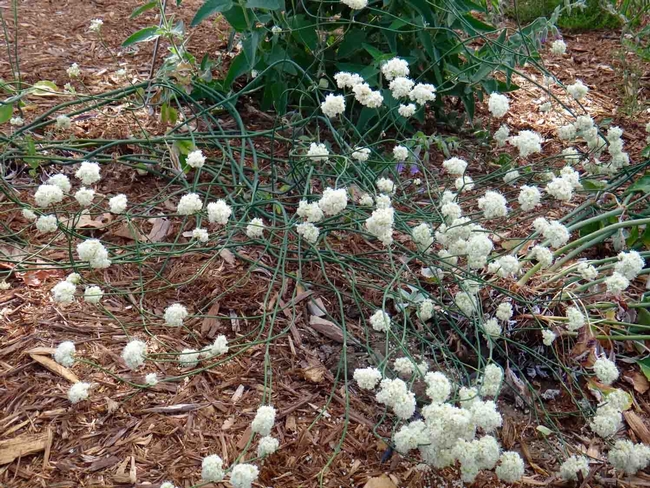We Californians understand the concept of summer dormancy: “Those hills aren't brown, they're beautifully golden!” We know that the cycle of seasons plays out a bit more dramatically across our hot, dry countryside than in locales where the landscape might stay predictably green throughout the summer.
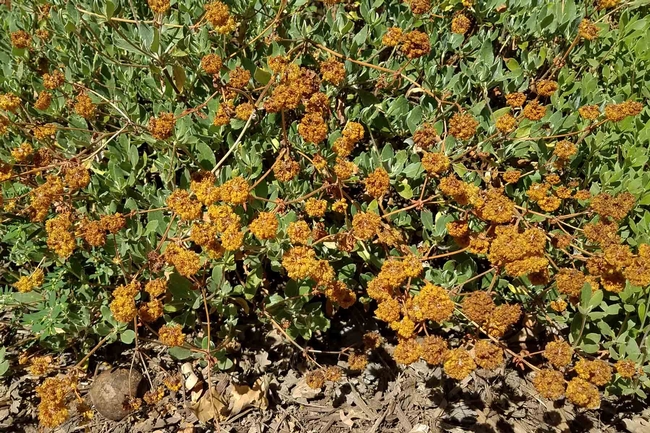
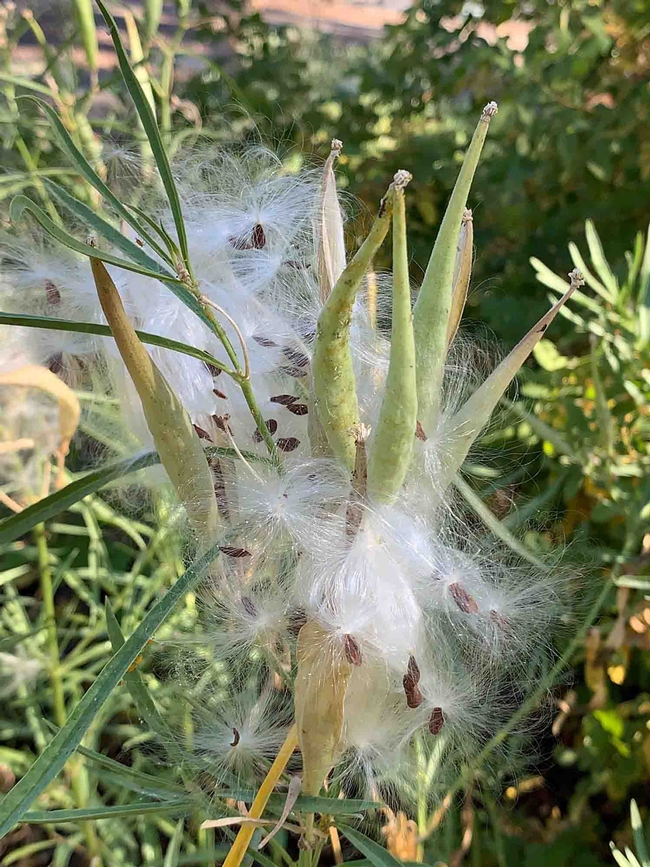
A visit to the Butte County Master Gardeners Demonstration Garden at the Patrick Ranch shows how various species hold up through a valley heat wave. Both the California Native garden and the Wildlife Habitat garden are zones planted solely with natives, and natives are incorporated into several of the other garden zones, including the Mediterranean garden and the Butte All-Stars. How do they look now at the height of summer? The California Native garden's collage of green, silver, and tawny shades; the varying heights and textures; and the abundant sprawl of stems, branches, and seedheads make a pleasing whole. Some specimens in the two native gardens look positively snappy—the manzanita ‘Louis Edmunds' (Arctostaphylos bakeri ‘Louis Edmunds'), the redbud (Cercis occidentalis), the canyon sagebrush (Artemisia californica ‘Canyon Gray'), and the coffeeberry ‘Eve Case' (Frangula californica ‘Eve Case') all look like their answer to heat is “no sweat.”
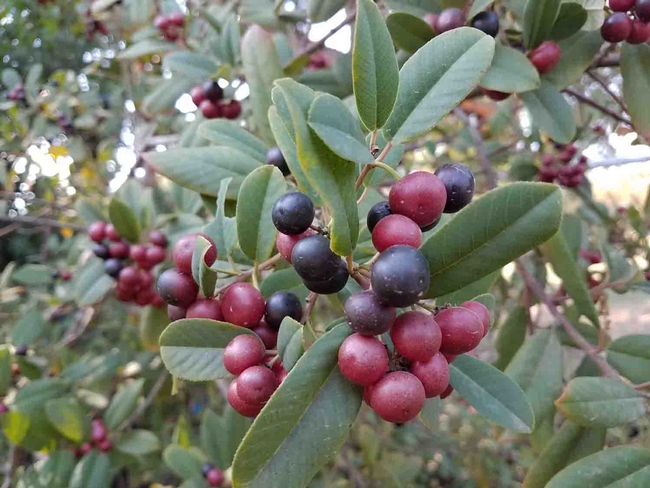
Most other species in the two native gardens look exactly as they should right now, exhibiting varying degrees of browning leaf edges, a mix of fresh and dried blooms, seedheads (some left unclipped for the birds), and fresh-to-fading greenery. The showy milkweed (Asclepias speciosa) and narrow-leafed milkweed (Asclepias fascicularis) display fat and burst pods, respectively. The wilting California rose (Rosa californica) is left un-deadheaded so it can develop its tiny hips. There are several different species of penstemon in the two gardens, with bloom times ranging from early spring to midsummer; they have finished flowering for the season, but are holding on valiantly to await another summer. The snapdragon bush (Keckiella antirrhinoides), coyote mint (Monardella villosa) and gum plant (Grindelia camporum) are well on their way to complete dormancy, right on schedule.
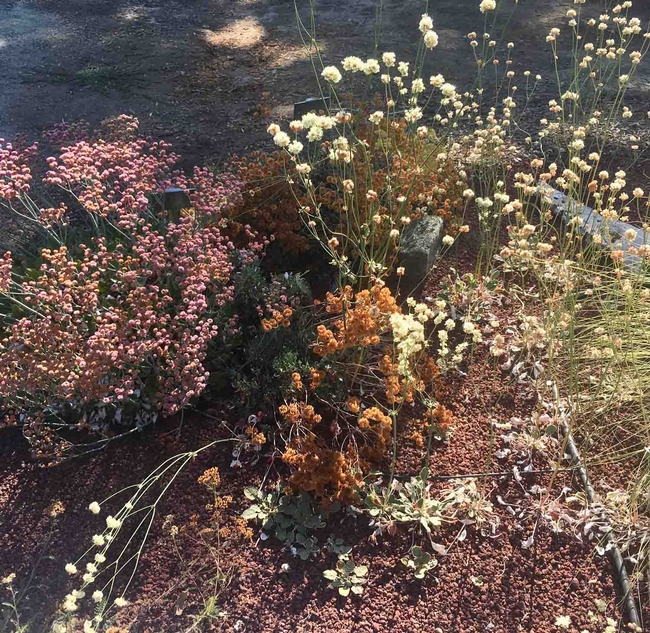
The watering regimen applied at these zones of native plants in the Demonstration Garden is a useful general guideline for drought-tolerant native species. We use a drip system with one two-gallon emitter on each specimen. We turn on irrigation in mid- to late June as the summer heats up, and water once every two weeks for 30 minutes, delivering around a gallon to each plant. Plants are watered throughout their first two summer seasons; for their first summer, newcomers planted in the fall or spring get additional hand-watering so they are watered weekly, and for the second summer, they receive the twice-monthly automated drip. After two summer cycles, emitters are removed from the most xeric specimens and they get no further scheduled irrigation. With this regular but spare watering, plants retain garden-worthy flowers and foliage longer than they would in the harsh outback.
When incorporating California natives into your own garden, follow these rules of thumb:
- Don't overwater. No amount of irrigation can coax a summer-dormant plant into bursting forth anew with fresh blooms and foliage. In fact, the best way to kill a heat-struck plant is to withhold water for weeks and then suddenly shock it with a midsummer flood. Take care to research the specific water needs for the particular plants in your own garden; not all natives are drought-tolerant.
- No stress, please. Peak summer is not the time for overzealous pruning or fertilizing, both of which can force the plant to put out new growth when it's least likely to survive. Deadhead spent blooms (or let seed heads develop for birds), but resist the urge to completely whack back leggy growth and browning foliage. You can tidy up in the fall.
- Mix it up. Many non-native garden favorites from compatible dry-summer climates have been cultivated over time to bear up under heat stress. By all means, mix natives with non-natives, perennials with annuals—just be sure to group plants with similar water needs together.
- Plan for succession. Early-season perennial bloomers, such as redbud, ceanothus, and bush lupines, give way to summer penstemons, salvias, yarrows, buckwheats, and a host of other beauties which provide color and interest well into late fall. Good places to start your research include the California Native Plant Society gardening website, and our UC Master Gardeners of Butte County website on Drought and Water-Wise Gardening.
